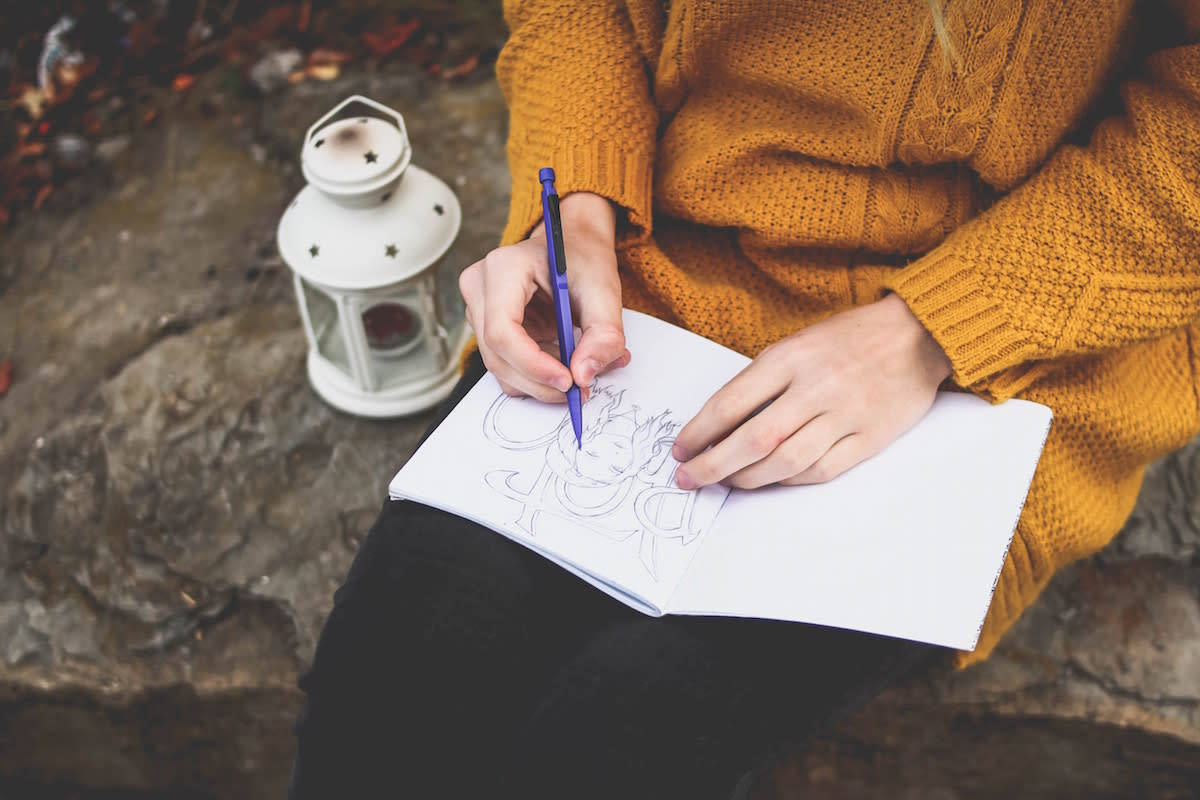Se há uma coisa que os humanos amorVocê pode ver que as fotos são de si mesmo. Basta visitar qualquer museu para você ver o quanto! Sempre há clientes no mercado para tirar um retrato, seja de si mesmos, de um ente querido ou de um cliente corporativo. O fato de os esboços de retratos serem tão procurados faz deles um excelente complemento para você. portfólio de ilustração on-linee, potencialmente, uma grande trabalho paralelo que aproveite suas habilidades de ilustração.
Há algo que você não sabe. assim Você também se sente satisfeito em capturar a semelhança perfeita de alguém. O desenho de retratos é uma arte delicada, mas acreditamos que você pode dominá-la! Aqui estão nossas 14 principais dicas sobre como você pode desenhar um ótimo retrato.
Como desenhar um rosto
Adquira sua ferramenta de desenho de retrato
Recomendamos o uso de um lápis B - ou qualquer lápis claro que você tenha - para seus desenhos de pessoas. Se não estiver familiarizado com o lápis de desenho profissional mais adequado para você, você pode dê uma olhada aqui. Para este tutorial, recomendamos que você tenha em mãos um lápis B, um lápis 3B, um lápis 4B, um lápis 5B e um lápis 6B.
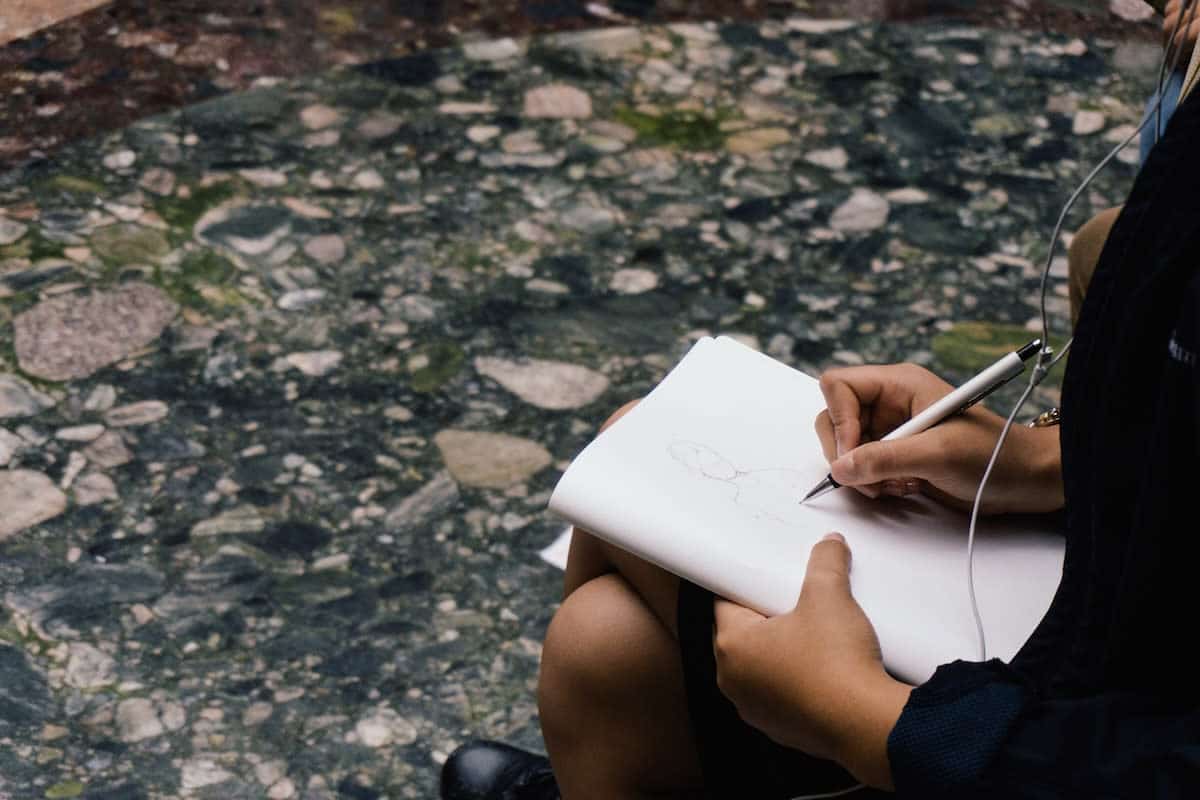
Comece com formas
Os desenhos de pessoas são todos baseados em formas geométricas. Os rostos e corpos das pessoas podem ser divididos em círculos, triângulos e quadrados.
Você precisa praticar para aprender a desenhar um rosto? Imprima uma foto de uma pessoa que você queira desenhar. Comece dividindo o rosto e o corpo nas formas básicas que você vê. Desenhe essas formas na própria imagem.
Independentemente de a imagem estar em linha reta, em silhueta ou oferecendo uma visão de três quartos, decomponha-a. Você pode usar uma imagem de forma oval. A testa, por exemplo, é uma forma oval. As bochechas são círculos, enquanto o cabelo é um grupo de círculos. O nariz é um triângulo, talvez. Sinta-se à vontade para repetir esse processo com quantas fotos você precisar para adquirir essa habilidade!
Trabalhe essas linhas de relacionamento
Uma grande parte de como desenhar um rosto se resume a Obtendo a perspectiva correta. Você precisa entender a relação entre todas as características do rosto da pessoa e colocá-las no espaço correto. Use linhas suaves para marcar essas relações.
Onde está a extremidade dessa narina em relação ao canto da boca? Onde estão as orelhas em relação aos olhos? Desenhe linhas verticais ou diagonais para observar os alinhamentos e empilhamentos das características.
Pregue essas distâncias
Agora, vamos transferir suas formas e linhas para a superfície de desenho real. Pergunte a si mesmo se você está dobrando o tamanho da imagem original. Você está triplicando? Copie as formas que você esboçou na imagem de referência, seguidas das linhas de relação. Mantenha tudo proporcional - isso é fundamental.
A etapa final para você aprender a desenhar um rosto são as medidas. Aqui está uma dica de desenho de retrato: você pode usar o lápis como uma ferramenta de medição. Observe a imagem de referência original: quanto do lápis está alinhado com a distância entre a boca e a orelha? Um terço do lápis? Se você estiver fazendo o retrato com o dobro do tamanho da foto, a distância entre a boca e a orelha deve ser de 2/3 do comprimento do lápis. As medidas se somam? Você ainda está proporcional?
Não tenha medo de adicionar mais linhas à imagem original ou à sua superfície. É bom criar pontos de referência distintos para ajudar você a determinar exatamente onde cada recurso está indo.
Agora que você já aprendeu a desenhar um rosto, vamos começar a desenhar os traços!
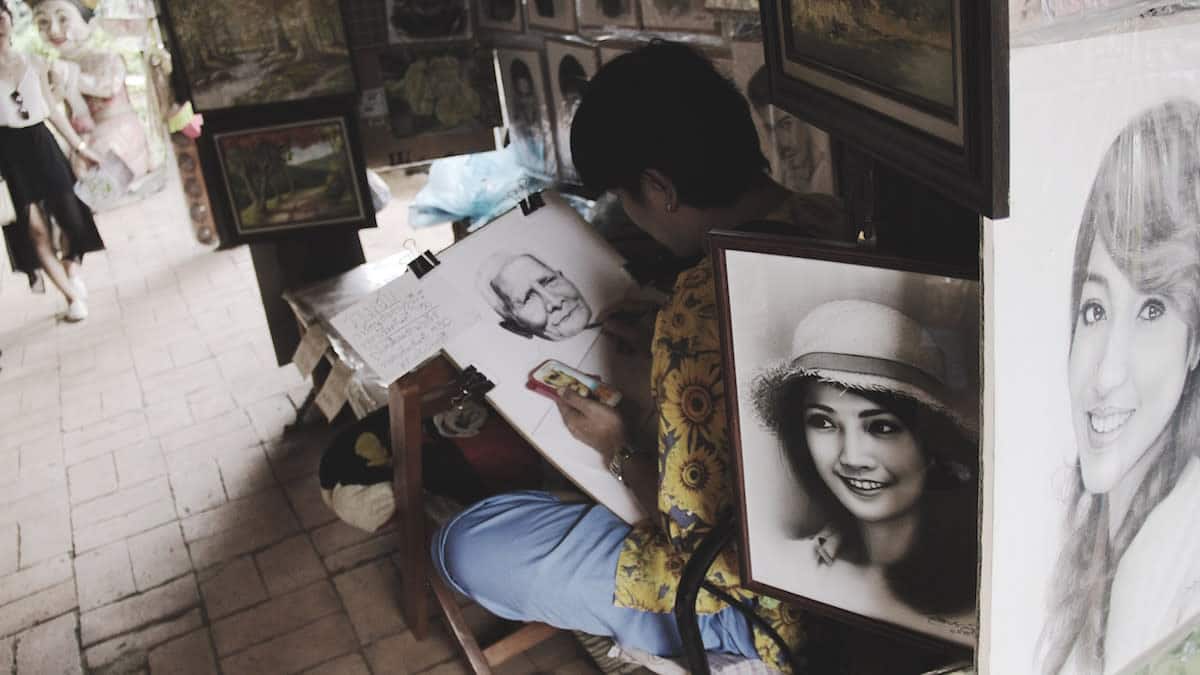
Como desenhar uma boca realista
Agora que você tem uma ideia básica de onde estarão os principais pontos de referência, é hora de começar a esboçar os detalhes faciais. Uma dica de desenho de retrato? Sugerimos que você comece pela boca. Dependendo de sua imagem ser uma visão de três quartos ou uma silhueta, a boca pode estar no perímetro do retrato, e estabelecer o perímetro é importante. Além disso, a boca é a mais delicada de todas as características faciais, portanto, é facilmente ajustável e também um ótimo trampolim para você desenhar o restante do rosto.
Ainda trabalhando com o lápis B, comece com pequenas formas dentro dos próprios lábios, com dois círculos pequenos na parte mais carnuda do lábio superior e um na parte inferior. A partir daí, comece com as sombras da boca: onde os lábios se tocam, desenhe as sombras que você vê.
Mude para um lápis 3B ou 4B para começar a adicionar os tons médios à boca. Os tons médios abrangem a maior parte do rosto, o que muitos artistas esquecem ao fazer desenhos de pessoas.
Com o lápis de tom médio mais claro, adicione os vincos curtos e curvos dos lábios. Essa é uma parte crucial do aprendizado de como desenhar uma boca realista. Fique atento: a maneira como você desenha essas linhas indicará o volume, a idade e a flexibilidade dos lábios. Cite sua imagem de referência original se você não tiver certeza. As linhas são muito finas ou um pouco mais grossas? Os lábios realmente dizem muito sobre o sujeito.
A partir daí, com a lateral do lápis B, adicione as sombras sutis ao redor da boca. A sombra abaixo do lábio inferior é um indicador de seu tamanho. As sombras em ambos os lados podem indicar o humor do sujeito. A sombra do arco de Cupido acima do lábio superior ajudará você a fazer a transição para o nariz.
Quando estiver confiante o suficiente com o desenho do retrato, você poderá usar o dedo ou um lenço de papel para mesclar essas sombras e realmente adicionar dimensão. Posteriormente, você também pode considerar o uso de diferentes mídias para você também em seus retratos.
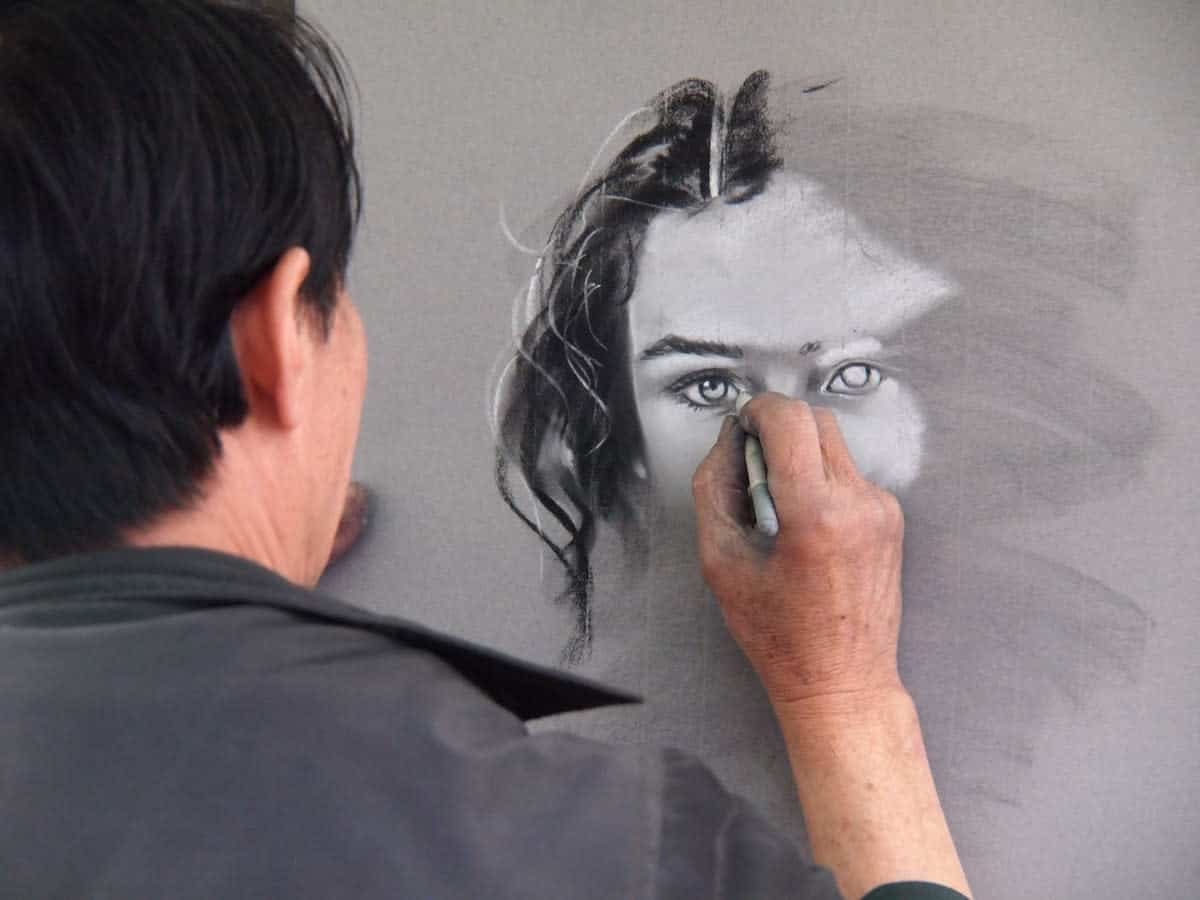
Como desenhar um nariz realista
Seguindo a sugestão do arco do Cupido, você saberá onde ficará a base do nariz. Com o lápis B, comece com dois ou três círculos (dependendo da perspectiva do retrato): um para a bola ou ponta do nariz e outro(s) para a(s) narina(s). A partir daí, adicione linhas muito delicadas para os perímetros do nariz visível.
Com o lápis 3B ou 4B - dependendo da escuridão - comece a adicionar a sombra. Você não está delineando o nariz; está dando a ele dimensão ao criar a ilusão de forma por meio das sombras no nariz.
Citando suas formas originais, linhas relacionais e linhas de medida, mantenha as proporções e distâncias ao adicionar as sombras. A pessoa tem narinas grandes ou muito pequenas? Elas têm uma ponta bulbosa ou uma ponta fina?
Uma dica para desenhar retratos: não sombreie muito a ponte ou as laterais da ponte do nariz, pois qualquer quantidade de sombra que você adicionar ali terá de continuar nas bochechas do rosto. Lembre-se: se você está apenas descobrindo como desenhar um nariz realista, menos é mais.
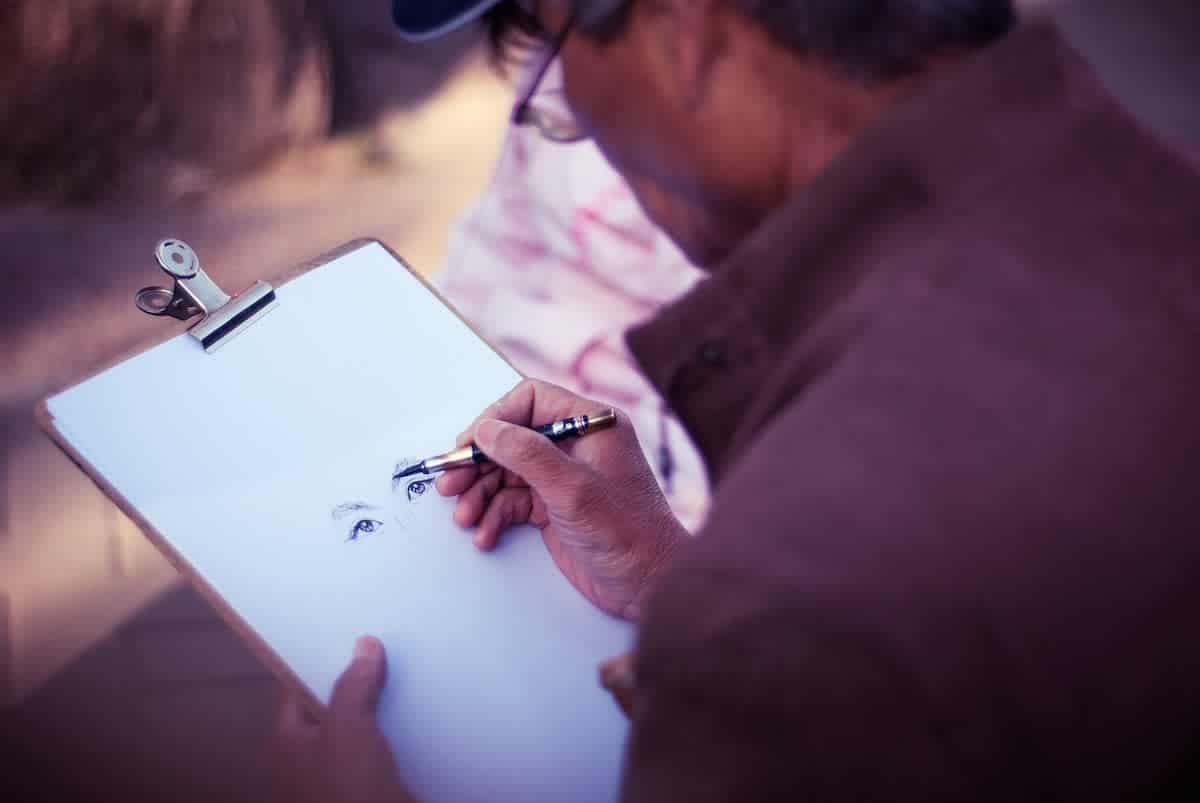
Como desenhar olhos
Os olhos são as janelas da alma! Aprender a desenhar um olho realista é uma das partes mais complexas da criação de desenhos de pessoas. A ponte do nariz leva à parte inferior das sobrancelhas, portanto, observe isso quando você começar a usar o lápis B. Novamente, dependendo da perspectiva em que o sujeito está - em linha reta, três quartos ou silhueta -, comece com formas leves: um círculo ou oval para a íris, um crescente longo para a pálpebra superior e um retângulo oblongo para a sobrancelha. Uma regra prática de desenho de retrato real é que, quando você desenha a íris, ela nunca é totalmente revelada: a pálpebra superior quase sempre cobre pelo menos o terço superior dela.
Agora, com o lápis 3B ou 4B, comece a adicionar a sombra no vinco da pálpebra, sob a sobrancelha e, muito sutilmente, no globo ocular sob a linha dos cílios. O sombreamento graduado na pálpebra provavelmente deve ser feito com um lenço de papel na ponta do dedo.
A partir daí, você pode começar a adicionar a pupila escura e os raios da íris. A pupila é bem escura, portanto, você pode usar um lápis 4B para isso. A íris contém algumas cores escuras e Você pode usar a íris para fazer realces leves, portanto, essa parte exigirá precisão e delicadeza. Quando terminar, considere borrar a íris suavemente com um lenço de papel para ajudar a eliminar a aparência de linhas óbvias.
Ao adicionar realce ou reflexo a um esboço de retrato, como no globo ocular, lembre-se de que você não está desenhando no realce: você está removendo a sombra para aludir à presença de luz. Uma tática seria usar uma pequena borracha e apagar pontos onde você já desenhou, o que criará um efeito de reflexo.
Para os pelos das sobrancelhas e dos cílios, comece com um lápis B e, depois, passe o lápis para escurecer, se necessário. Não se esqueça: os pêlos das sobrancelhas são normalmente bem curtos e retos, enquanto os pêlos dos cílios são longos e geralmente curvados.
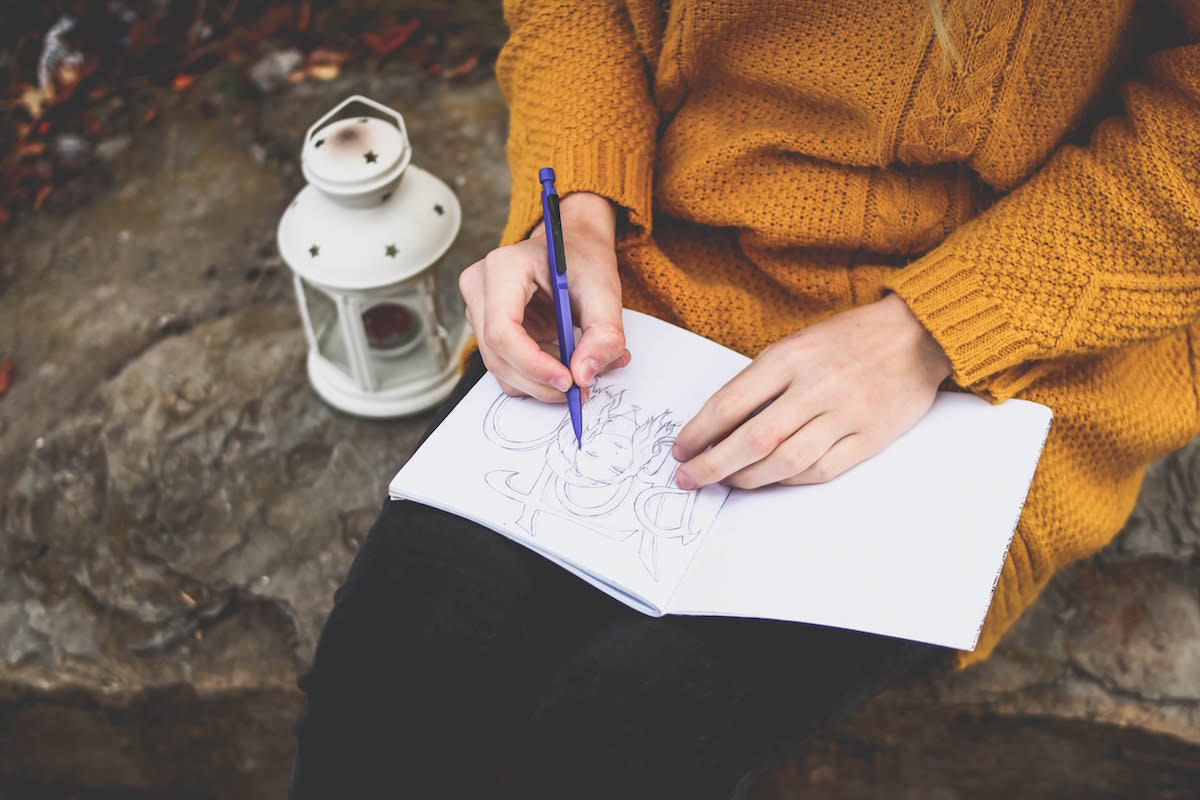
Como desenhar cabelos realistas
Quando você está aprendendo a desenhar retratos realistas, o cabelo pode realmente ser o ponto principal. Há quatro etapas nas quais você precisa trabalhar: volume, fluxo, valor e textura.
Volume
Primeiro, imagine que o sujeito está usando um capacete. Com o lápis B, desenhe levemente o perímetro do cabelo como uma forma sólida, semelhante a um capacete. Lembre-se de que o cabelo não é bidimensional e acrescenta mais largura e altura à cabeça.
Fluxo
Imagine a água correndo em uma superfície rochosa. Os cabelos mais longos fluem para baixo e rolam sobre os ombros e ao redor da curvatura do rosto. Com o lápis B, estabeleça esses diferentes grupos de cabelos que percorrem seus próprios caminhos para baixo. Para cabelos mais curtos que talvez ainda não tenham o peso necessário para fluir para baixo, contorne levemente os picos e vales que você vê.
Valor
É nesse momento que você usa a variedade de lápis para estabelecer sombras, tons médios e luzes. Comece com os tons mais claros, sombreando a sombra e as partes mais claras do cabelo, e lembre-se de omitir qualquer sombreamento das seções destacadas. A partir daí, comece a trabalhar nas seções mais escuras.
Textura
A textura é a parte tediosa. Você pode adicionar o máximo ou o mínimo de textura que quiser, mas como você está aprendendo a desenhar cabelos realistas, nós o orientaremos!
Com as pontas mais finas do lápis, você pode adicionar levemente as linhas dos cabelos individuais dentro de cada seção fluida que você estabeleceu anteriormente. Não desenhe o cabelo do couro cabeludo até embaixo; em vez disso, trace finamente os cabelos onde você quer que eles sejam enfatizados.
Dê os toques finais
Depois de concluir todas as características, você pode passar por cima dos pontos que deseja escurecer com um lápis 5B ou 6B. É sempre melhor deixar isso para o final, pois é sempre mais fácil escurecer do que clarear.
E é isso!
Adicione seus esboços de retratos ao seu portfólio on-line
Quando tiver alguns desses retratos, você vai querer exibi-los em seu site de portfólio on-line. Você não tem um? Encontre um Criador de sites que tem alguns modelos legais que mostrará seu trabalho de forma agradável. Ao navegar pelos portfólios de outros ilustradores e artistas é uma ótima maneira de você se inspirar para criar seu próprio site.
Agora, coloque essas dicas de desenho de retrato em prática e comece a fazer alguns desenhos de pessoas - mal podemos esperar para vê-los!
Você quer mais conselhos para ilustradores?
Então você quer ser um ilustrador freelancer?
Os melhores concursos e prêmios de ilustração para 2018/2019
As melhores aulas de ilustração on-line para artistas
